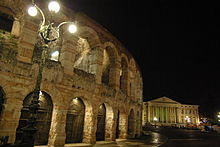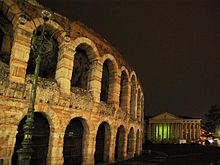World Wide Fund for Nature
 Logo used since 2000[a] | |
| Formation | 29 April 1961 |
|---|---|
| Founders | |
| Type | International NGO |
| Purpose | |
| Headquarters | Rue Mauverney 28 Gland, Vaud, Switzerland |
Region | Worldwide |
| Methods |
|
President | Adil Najam |
Director General | Kirsten Schuijt |
Revenue | |
| Website | wwf worldwildlife |
| ^ a: Also the WWF's first president.[4] | |
The World Wide Fund for Nature (WWF) is a Swiss-based international non-governmental organization founded in 1961 that works in the field of wilderness preservation and the reduction of human impact on the environment.[5] It was formerly named the World Wildlife Fund, which remains its official name in Canada and the United States. WWF is the world's largest conservation organization, with over five million supporters worldwide, working in more than 100 countries and supporting around 3,000 conservation and environmental projects.[6] They have invested over $1 billion in more than 12,000 conservation initiatives since 1995.[7] WWF is a foundation with 65% of funding from individuals and bequests, 17% from government sources (such as the World Bank, DFID, and USAID) and 8% from corporations in 2020.[8][9]
WWF aims to "stop the degradation of the planet's natural environment and to build a future in which humans live in harmony with nature."[10] The Living Planet Report has been published every two years by WWF since 1998; it is based on a Living Planet Index and ecological footprint calculation.[5] In addition, WWF has launched several notable worldwide campaigns, including Earth Hour and Debt-for-nature swap, and its current work is organized around these six areas: food, climate, freshwater, wildlife, forests, and oceans.[5][7]
WWF has faced criticsm for its corporate ties[11][12][13] and for supporting conservation measures that have resulted in violent conflict with local people.[14][15] WWF is part of the Steering Group of the Foundations Platform F20, an international network of foundations and philanthropic organizations.[16]
History
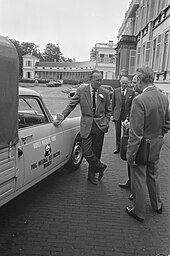
The idea for a fund on behalf of endangered animals was officially proposed by Victor Stolan to Sir Julian Huxley in response to articles he published in the British newspaper The Observer. This proposal led Huxley to put Stolan in contact with Edward Max Nicholson, a person who had had thirty years experience of linking progressive intellectuals with big business interests through the Political and Economic Planning think tank.[1][17][18] Nicholson thought up the name of the organization and the original panda logo was designed by Sir Peter Scott. WWF was conceived on 29 April 1961, under the name of World Wildlife Fund. Its first office was opened on 11 September in IUCN's headquarters at Morges, Switzerland.
The WWF was conceived to act as an international fundraising organisation to support the work of existing conservation groups, primarily the International Union for Conservation of Nature.[19] Its establishment was marked with the signing of the Morges Manifesto, the founding document that sets out the fund's commitment to assisting worthy organizations struggling to save the world's wildlife:[20]
They need above all money, to carry out mercy missions and to meet conservation emergencies by buying land where wildlife treasures are threatened, and in many other ways. Money, for example, to pay guardians of wildlife refuges .... Money for education and propaganda among those who would care and help if only they understood. Money to send out experts to danger spots and to train more local wardens and helpers in Africa and elsewhere. Money to maintain a sort of 'war room' at the international headquarters of conservation, showing where the danger spots are and making it possible to ensure that their needs are met before it is too late.
— Morges Manifesto
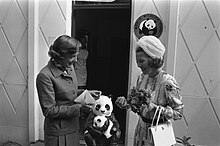
Prince Bernhard of Lippe-Biesterfeld helped to found the WWF, becoming its first president in 1961. In 1963, the Foundation held a conference and published a major report warning of anthropogenic global warming, written by Noel Eichhorn based on the work of Frank Fraser Darling (then foundation vice president), Edward Deevey, Erik Eriksson, Charles Keeling, Gilbert Plass, Lionel Walford, and William Garnett.[21]
In 1970, along with Prince Philip, Duke of Edinburgh, and a few associates, Bernhard established the WWF's financial endowment The 1001: A Nature Trust to handle the organization's administration and fundraising. 1001 members each contributed $10,000 to the trust.[22] Prince Bernhard resigned his post after being involved in the Lockheed Bribery Scandal.[23]
List of presidents
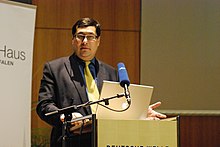
| Years[24] | Name[24] | Country |
|---|---|---|
| 1961–1976 | Prince Bernhard of Lippe-Biesterfeld | |
| 1976–1981 | John Hugo Loudon | |
| 1981–1996 | Prince Philip, Duke of Edinburgh | |
| 1996–1999 | Syed Babar Ali | |
| 2000 | Ruud Lubbers | |
| 2000–2001 | Sara Morrison | |
| 2001–2010 | Chief Emeka Anyaoku | |
| 2010–2017 | Yolanda Kakabadse | |
| 2018–2022 | Pavan Sukhdev | |
| 2023–present | Adil Najam[25] |
Recent developments
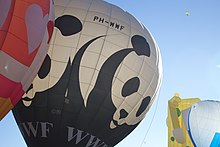
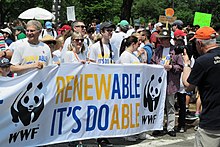
The WWF has set up offices and operations around the world. It originally worked by fundraising and providing grants to existing non-governmental organizations with an initial focus on the protection of endangered species. As more resources became available, its operations expanded into other areas such as the preservation of biological diversity, sustainable use of natural resources, the reduction of pollution, and climate change. The organization also began to run its own conservation projects and campaigns.[citation needed] In 1986, the organization changed its name to World Wide Fund for Nature, while retaining the WWF initials. However, it continued at that time to operate under the original name in the United States and Canada.[26]
1986 was the 25th anniversary of WWF's foundation, an event marked by a gathering in Assisi, Italy to which the organization's International President Prince Philip, the Duke of Edinburgh, invited religious authorities representing Buddhism, Christianity, Hinduism, Islam and Judaism. These leaders produced The Assisi Declarations, theological statements showing the spiritual relationship between their followers and nature that triggered a growth in the engagement of those religions with conservation around the world.[26]
In the 1990s, WWF revised its mission statement to:[citation needed]
Stop the degradation of the planet's natural environment and to build a future in which humans live in harmony with nature,
- conserving the world's biological diversity;
- ensuring that the use of renewable natural resources is sustainable; [and]
- promoting the reduction of pollution and wasteful consumption.
WWF researchers and many others identified 238 ecoregions that represent the world's most biologically outstanding terrestrial, freshwater and marine habitats, based on a worldwide biodiversity analysis which the organization says was the first of its kind.[27] In the early 2000s (decade), its work was focused on a subset of these ecoregions, in the areas of forest, freshwater and marine habitat conservation, endangered species conservation, climate change, and the elimination of the most toxic chemicals.
We shan't save all we should like to, but we shall save a great deal more than if we had never tried.
— Sir Peter Scott[22]
Harvard University published a case study on WWF called "Negotiating Toward the Paris Accords: WWF & the Role of Forests in the 2015 Climate Agreement":[28] In 2023, Prof. Adil Najam, a globally renowned climate scientist and policy expert from Pakistan, was appointed as the President of WWF International signifying the growing importance on climate change as well as of human well-being in the WWF agenda.[29]
Conservation Foundation
In 1947 the Conservation Foundation was formed in New York City by Fairfield Osborn. It arranged funding for scientific research into global conservation issues. It did not lobby or engage in politics. In 1985 it became an affiliate of the WWF. In 1990, it completely merged into WWF.[5]
Conservation Foundation in the United States
The organization now known as the Conservation Foundation in the United States is the former Forest Foundation of DuPage County.[19][30] In 1996, the organization obtained general consultative status from UNESCO.[31]
Panda symbol
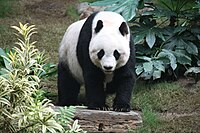
WWF's giant panda logo originated from a panda named Chi Chi that had been transferred from Beijing Zoo to London Zoo in 1958, three years before WWF was established. Being famous as the only panda residing in the Western world at that time, her uniquely recognisable physical features and status as an endangered species were seen as ideal to serve the organization's need for a strong recognisable symbol that would overcome all language barriers.[32] The organization also needed an animal that would have an impact in black and white printing. The logo was then designed by Sir Peter Scott from preliminary sketches by Gerald Watterson, a Scottish naturalist.[33][34]
The logo was slightly simplified and made more geometric in 1978, and was stylized and made less detailed in 1986, at the time that the organization changed its name, with the new version featuring solid black shapes for eyes.[35] In 2000 a change was made to the font used for the initials "WWF" in the logo.[36]
Organization and operation
Policy-making

Policies of the WWF are made by board members elected for three-year terms. An Executive Team guides and develops WWF's strategy. There is also a National Council which stands as an advisory group to the board and a team of scientists and experts in conservation who research for WWF.
National and international law plays an important role in determining how habitats and resources are managed and used. Laws and regulations become one of the organization's global priorities.
The WWF has been opposed to the extraction of oil from the Canadian tar sands and has campaigned on this matter. Between 2008 and 2010 the WWF worked with The Co-operative Group, the UK's largest consumer co-operative to publish reports which concluded that: (1) exploiting the Canadian tar sands to their full potential would be sufficient to bring about what they described as 'runaway climate change;[37] (2) carbon capture and storage (CCS) technology cannot be used to reduce the release of carbon dioxide into the atmosphere to a level comparable to that of other methods of oil extraction;[38] (3) the $379 billion which is expected to be spent extracting oil from tar sands could be better spent on research and development in renewable energy technology;[39] and (4) the expansion of tar sands extraction poses a serious threat to the caribou in Alberta .[40]
The organization convinces and helps governments and other political bodies to adopt, enforce, strengthen and/or change policies, guidelines and laws that affect biodiversity and natural resource use. It also ensures government consent and/or keeps their commitment to international instruments relating to the protection of biodiversity and natural resources.[41][42]
In 2012, David Nussbaum, Chief Executive of WWF-UK, spoke out against the way shale gas is used in the UK, saying: "... the Government must reaffirm its commitment to tackling climate change and prioritise renewables and energy efficiency."[43]
Collaboration

The organisation works on a number of global issues driving biodiversity loss and unsustainable use of natural resources, including species conservation, finance, business practices, laws, and consumption choices. Local offices also work on national or regional issues.[44]
WWF works with a large number of different groups to achieve its goals, including other NGOs, governments, business, investment banks, scientists, fishermen, farmers and local communities. It also undertakes public campaigns to influence decision makers, and seeks to educate people on how to live in a more environmentally friendly manner. It urges people to donate funds to protect the environment. The donors can also choose to receive gifts in return.[citation needed]
In October 2020, WWF was named as one of the alliance partner's of Prince William's Earthshot Prize, to find solutions to environmental issues.[45]
In March 2021, WWF announced an extension of their partnership with H&M to address sustainable supply chain practices.[46]
Notable initiatives and programs
Campaigns
Publications
WWF publishes the Living Planet Index in collaboration with the Zoological Society of London. Along with ecological footprint calculations, the Index is used to produce a bi-yearly Living Planet Report giving an overview of the impact of human activity on the world.[47] In 2019, WWF and Knorr jointly published the Future 50 Foods report identifying "50 Foods for Healthier People and a Healthier Planet".[48] In 2018, WWF, TRAFFIC and IFAW launched the Coalition to End Wildlife Trafficking Online with 21 tech companies. [49] In 2017, Instagram accounts, Sal Lavallo and Jessica Nabongo ate a trafficked, endangered pangolin at a hotel in Gabon.[50] There is often no penalty to social media accounts for cruelty to animals on social media platforms.[51][52]
The organization also regularly publishes reports, fact sheets and other documents on issues related to its work, to raise awareness and provide information to policy and decision makers.[53]
Promotions

- No One's Gonna Change Our World was a charity album released in 1969, for the benefit of the WWF.[54]
- Peter Rose and Anne Conlon are music theatre writers, well known for their environmental musicals for children, who were commissioned by WWF-UK to write several environmental musicals as part of an education plan.[55] Some were narrated by David Attenborough, and broadcast on television in numerous countries.
- The British pop group S Club 7 were ambassadors for WWF-UK during their time together as a band (1999–2003).[56] Each of the members sponsored an endangered animal, and in 2000, traveled to the various locations around the world of their chosen animals for a seven-part BBC documentary series entitled S Club 7 Go Wild.
- Environmentally Sound: A Select Anthology of Songs Inspired by the Earth is a benefit album released in 2006, for WWF-Philippines, featuring artists that included Up Dharma Down, Radioactive Sago Project, Kala, Johnny Alegre Affinity, Cynthia Alexander, and Joey Ayala.[57]
- In June 2012, WWF launched an online music download store with fairsharemusic from which 50% of the profit goes to the charity.[58]
- In April 2015, Hailey Gardiner released her solo EP, titled The Woods. In honor of Earth Day, 15% of the proceeds made towards the purchase of the EP would be donated to the WWF.[59]
Environmental education
From 1997 to 2007, the WWF's China office conducted its Environmental Educators' Initiative, which trained thousands of teachers, established environmental education training centers at teachers' universities, and influenced the drafting of the Ministry of Education's 2003 guidelines for public school environmental education.[60]: 145
Controversies and disputes
ARD documentary and PandaLeaks book
The German public television ARD aired a documentary on 22 June 2011 that claimed to show how the WWF cooperates with corporations such as Monsanto, providing sustainability certification in exchange for donations – essentially greenwashing.[61] WWF has denied the allegations.[62] By encouraging high-impact eco-tourism, the program alleges that WWF contributes to the destruction of habitat and species it claims to protect while also harming indigenous peoples.[63]
The filmmaker, German investigative journalist Wilfried Huismann, was sued by the WWF over his documentary and the book Schwarzbuch WWF published in 2012, which was based on the documentary. In an out of court settlement, he agreed to remove or revise certain claims. Speaking on behalf of WWF Germany, Marco Vollmar indicated "[Huismann] draws a distorted picture of false statements, defamations and exaggerations, but we will accept that as expressions of opinion." (Translated from the original German: "ein Zerrbild aus falschen Aussagen, Diffamierungen und Übertreibungen, aber das werden wir als Meinungsäußerungen hinnehmen.")[64]
In 2014, Huismann published a revised edition of his 2012 book, originally called The Silence of the Pandas. The original edition had become a bestseller in Germany, but was banned from Britain until 2014, when it was released under the title of PandaLeaks – The Dark Side of the WWF, after a series of injunctions and court orders.[65] The book criticizes WWF for its involvement with corporations that are responsible for large-scale destruction of the environment, such as Coca-Cola, and gives details into the existence of the secret 1001 Club, whose members, Huismann claims, continue to have an unhealthy influence on WWF's policy making.[65] WWF has denied the allegations made against it.[66]
Corporate partnerships
WWF has been accused by the campaigner Corporate Watch of being too close to business to campaign objectively.[11][12] WWF claims partnering with corporations such as Coca-Cola, Lafarge, Carlos Slim's and IKEA will reduce their effect on the environment.[67] WWF received €56 million (US$80 million) from corporations in 2010 (an 8% increase in support from corporations compared to 2009), accounting for 11% of total revenue for the year.[9]
For their 2019 fiscal year, WWF reported 4% of their total operating revenue coming from corporations.[68]
Alleged human rights abuses by paramilitaries
In 2017, a report by Survival International claimed that WWF-funded paramilitaries are not only committing abuses against the indigenous Baka and Bayaka in the Congo Basin, who "face harassment and beatings, torture and death", but are also corrupt and aid in the destruction of conserved areas. The report accused WWF and its guards of partnering with several logging companies who carried out deforestation, while the rangers ignored wildlife trafficking networks.[69]
In 2019, an investigation by BuzzFeed News alleged that paramilitary groups funded by the organisation are engaged in serious human rights abuses against villagers, and the organisation has covered up the incidents and acted to protect the perpetrators from law enforcement. These armed groups were claimed to torture, sexually assault, and execute villagers based on false accusations. In one instance found by BuzzFeed News investigators, an 11-year-old boy was allegedly tortured by WWF-funded rangers in front of his parents;[70] WWF ignored all complaints against the rangers. In another incident, a ranger attempted to rape a Tharu woman and, when she resisted, attacked her with bamboo stick until she lost consciousness. While the ranger was arrested, the woman was pressured not to press charges, resulting in the ranger going free. In 2010, WWF-sponsored rangers reportedly killed a 12-year-old girl who was collecting tree bark in Bardiya National Park. Park and WWF officials allegedly obstructed investigations in these cases, by "falsifying and destroying evidence, falsely claiming the victims were poachers, and pressuring the families of the victims to withdraw criminal complaints".[70][71]
In July 2019, Buzzfeed reported that a leaked report by the WWF accused guards of beating and raping women including pregnant women while torturing men by tying their penises with fishing lines. The investigations were cut short after paramilitary groups threatened investigators with death. The investigators accused WWF of covering up the crimes. Releasing an official statement, the WWF claimed that the report was not made public to ensure the safety of the victims and that the guards were suspended and are awaiting prosecution. However Buzzfeed accused the WWF of attempting to withhold the report to the US congressional committee investigating the human rights violations by providing highly redacted versions instead.[72][73]
In the Central African Republic, WWF officials were reportedly involved in an arms deal, where the organization paid for 15 Kalashnikov assault rifles and ammunition; but part of the money went unaccounted for and they were apparently defrauded by the CAR army representatives selling the weapons.[70]
The Kathmandu Post, which cooperated with BuzzFeed News on the investigations in Nepal, claimed there was intense lobbying and political pressure to release WWF-funded rangers arrested for murder. They interviewed activists who claimed they were promised donations for pressuring victims of abuse to drop charges against the rangers. When the local Tharu community protested, WWF officials carried out a counter-protest in favour of the accused and used park elephants to block Prithvi Highway.[74]
An investigation by Rainforest Foundation UK found evidence of widespread physical and sexual assault by 'eco-guards' employed by the Salonga National Park in the Democratic Republic of Congo funded by WWF. These include two cases of gang rape, two extrajudicial killings, and multiple accounts of torture and other forms of mistreatment committed by park guards.[75]
In reply to the investigations, WWF stated that it takes any allegations seriously and would be launching an independent review into the cases raised. The organisation stated it has stringent policies designed to ensure it and its partners are safeguarding the rights and well-being of indigenous peoples and local communities, and should the review uncover any breaches, it is committed to taking swift action.[76]
These accusations were central to a four day sit-in protest carried out by members of Extinction Rebellion's XR Youth Solidarity Network at WWF-UK's headquarters in September 2021.[77]
Initialism dispute
In 2000, the World Wide Fund for Nature sued the World Wrestling Federation (now named WWE) for unfair trade practices. Both parties had shared the initials "WWF" since 1979. The conservation organization claimed that the professional wrestling company had violated a 1994 agreement regarding international use of the WWF initials.[78][79]
On 10 August 2001, a UK court ruled in favour of the World Wide Fund for Nature. The World Wrestling Federation filed an appeal in October 2001, but later withdrew their appeal. On 5 May 2002, the World Wrestling Federation changed its Web address from WWF.com to WWE.com, and replaced every "WWF" reference on the existing site with "WWE", officially announcing their name change to "World Wrestling Entertainment" a day later with a "Get the 'F' Out" marketing campaign. The company's stock ticker also switched from WWF to WWE shortly after.
The wrestling organization's abandonment of "WWF" initialism did not end the two organizations' legal conflict. Later in 2002, the World Wide Fund for Nature petitioned the court for $360 million in damages, but was not successful. A subsequent request to overturn by the World Wide Fund for Nature was dismissed by the British Court of Appeal on 28 June 2007. In 2003, World Wrestling Entertainment won a limited decision which permitted them to continue marketing certain pre-existing products with the abandoned WWF logo. However, WWE was mandated to issue newly branded merchandise such as apparel, action figures, video games, and DVDs with the "WWE" initials. Additionally, the court order required the company to remove both auditory and visual references to "WWF" in its library of video footage outside the United Kingdom.
Starting with the 1,000th episode of Raw in July 2012, the WWF "scratch" logo is no longer censored in archival footage. In addition, the WWF initials are no longer censored when spoken or when written in plain text in archival footage. In exchange, WWE is no longer permitted to use WWF initials or logo in any new, original footage, packaging, or advertising, with any old-school logos for retro-themed programming now using a modification of the original WWF logo without the F.
Mekong River dolphins report
In June 2009, Touch Seang Tana, chairman of Cambodia's Commission for Conservation and Development of the Mekong River Dolphins Eco-tourism Zone, argued that the WWF had misrepresented the danger of extinction of the Mekong dolphin to boost fundraising.[80] The report stated that the deaths were caused by a bacterial disease that became fatal due to environmental contaminants suppressing the dolphins' immune systems.[81] He called the report unscientific and harmful to the Cambodian government and threatened WWF's Cambodian branch with suspension unless they met with him to discuss his claims.[82] Touch Seang Tana later said he would not press charges of supplying false information and would not make any attempt to prevent WWF from continuing its work in Cambodia, but advised WWF to adequately explain its findings and check with the commission before publishing another report. Criticism of the validity of reports critical of government action or inaction, where 'approval' has not been sought before publication, is common in Cambodia.[83]
In January 2012, Touch Seang Tana signed the "Kratie Declaration on the Conservation of the Mekong River Irrawaddy Dolphin" along with WWF and the Cambodian Fisheries Administration, an agreement binding the parties to work together on a "roadmap" addressing dolphin conservation in the Mekong River.[84]
Accountability
The Charity Navigator gave the WWF a 3-star overall rating, a 2-star financial rating and a 4-star accountability and transparency rating for the 2018 fiscal year.[85]
Manipulation of CO2 emissions data from nuclear energy
In 2009, in a scorecard report that they authored on carbon emissions in G8 countries, the WWF portrayed the greenhouse gas emissions of countries who use low-carbon nuclear power in their mix as a higher amount of emissions than realistically calculated. For example, for France, the WWF displayed a false value of 362 gCO2eq/kWh which is over 400% larger than the actual emissions in France. WWF explained the manipulation as follows:[86][87]
WWF does not consider nuclear power to be a viable policy option. The indicators "emissions per capita", "emissions per GdP" and "Co2 per kWh electricity" for all countries have therefore been adjusted as if the generation of electricity from nuclear power had produced 350 gCo2/kWh (emission factor for natural gas). Without the adjustment, the original indicators for France would have been much lower, e.g. 86 gCo2/kWh.
The scorecard for Sweden was also "adjusted" in similar way, where the WWF replaced the actual emissions of 47 gCO2eq/kWh with 212 gCO2eq/kWh.[87]
Nord Stream involvement
In 2011 Jochen Lamp, head of WWF Germany, was also head of Conservation Foundation German Baltic, sponsored by Nord Stream AG company building a controversial gas pipeline from Russia to Germany. While WWF headed by Lamp has been actively blocking the project using court cases, Nord Stream reached "an out-of-court agreement" with the Foundation, also headed by Lamp, involving transfer of 10 million EUR, after which WWF withdrew the case.[88][89]
Controversy on investments in multiple fossil fuel developments
Investigative journalism by NBC and later Naomi Klein, in 2008 and 2013 respectively, uncovered that the WWF has invested and profits from, multi-million dollar investment contracts it has put into oil, gas, coal and tar sands developments and did not pull out of these, divesting, when confronted but indicated it would at the minimum wait until 2020 to do so, in some of its fossil fuel ventures, as early ending would have not been as profitable for them. The WWF does not oppose fossil fuels but engages in what it internally terms as the "responsible development" of fossil fuels.[90]
Proposal to sell non-fungible tokens
In February 2022, WWF UK released plans to raise funds through selling NFTs (non-fungible tokens).[91] NFT is a unit of data stored on a blockchain. Critics point out transacting NFTs causes significant environmental impact.[92][93]
Listing as a "foreign agent" and an "undesirable organisation" in Russia
On 10 March 2023, during the 2022 Russian invasion of Ukraine, WWF was listed as a so-called "foreign agent" in Russia, for allegedly trying to influence the Russian authorities "under the guise of protecting nature and the environment".[94] About two and a half months later, the Prosecutor-General of Russia designated it as a so-called "undesirable organisation", on similar grounds. This decision effectively bans the group from operating in the country.[95]
Regional organisations
WWF-Australia
The Australian arm of WWF was established on 29 June 1978 in an old factory in Sydney, with three staff and a budget of around A$80,000 for the first year, consisting of a A$50,000 grant from the Commonwealth Government and a further A$20,500 in corporate donations. As of 2020[update], WWF-Australia is the country's biggest conservation organisation, which operates projects throughout Australia as well as the wider Oceania region.[96] Between 2015 and 2019 WWF-Australia reported an average revenue of $28.74 million per year. In 2020, WWF-Australia reported a total revenue of over $80 million driven by the global & local response to the Australian bushfires.[97]
In 1990, WWF-Australia established the national Threatened Species Network (TSN) with the federal government, which remained operational until 2009. In 1999 it participated in the creation of the Environment Protection and Biodiversity Conservation Act, at that time the most encompassing biodiversity conservation laws in the world. In 2003/4 the organisation played a part in getting the government to raise the level of protection for the Great Barrier Reef and the Ningaloo Reef, and since then has participated in or managed many conservation programs, such as the reintroduction of black-flanked rock-wallabies to Kalbarri National Park in Western Australia.[96]
Fundación Vida Silvestre Argentina
In Argentina, WWF is represented by Fundación Vida Silvestre Argentina, an independent organization which is also a part of the network.
See also
- Centres of Plant Diversity
- Conservation movement
- Environmental Dispute Resolution Fund
- Environmental movement
- Eugene Green Energy Standard, founded by the WWF.
- Global 200, ecoregions identified by the WWF as priorities for conservation
- List of environmental organizations
- Natural environment
- Sustainability
- Sustainable development
- Traffic (conservation programme), a joint programme of WWF and the International Union for Conservation of Nature (IUCN)
- West Coast Environmental Law
- World Conservation Award, created in conjunction with the WWF
Notes
- ^ The logo's panda symbol has been in use since 1986.
References
- ^ a b "WWF in the 60s". World Wide Fund for Nature. Archived from the original on 26 January 2011. Retrieved 19 August 2012.
- ^ In Memoriam: Godfrey A. Rockefeller Archived 14 May 2012 at the Wayback Machine, World Wildlife Fund, 29 January 2010.
- ^ "Financial Info". World Wildlife Fund. Retrieved 29 November 2023.
- ^ "WWF – Who We Are – History". Worldwildlife.org. Archived from the original on 6 February 2012. Retrieved 19 August 2012.
- ^ a b c d "History | WWF". World Wildlife Fund. Archived from the original on 13 April 2020. Retrieved 22 January 2019.
- ^ "WWF conservation projects around the world". Archived from the original on 12 February 2021. Retrieved 6 February 2009.
- ^ a b "WWF – Endangered Species Conservation". World Wildlife Fund. Archived from the original on 17 April 2018. Retrieved 18 April 2018.
- ^ "How is WWF run?". Archived from the original on 13 June 2022. Retrieved 13 June 2022.
{{cite web}}: CS1 maint: bot: original URL status unknown (link) - ^ a b WWFN-International Annual Review (PDF). World Wide Fund for Nature. 2020. p. 60. Archived (PDF) from the original on 10 October 2022. Retrieved 13 June 2022.
- ^ "WWF's Mission, Guiding Principles and Goals". WWF. Archived from the original on 13 January 2019. Retrieved 13 January 2019.
- ^ a b "PANDA-ING TO THE SOYA BARONS?". Corporate Watch. 30 September 2009. Archived from the original on 25 July 2011. Retrieved 9 December 2009.
- ^ a b Fred Pearce (2 April 2009). "Ikea – you can't build a green reputation with a flatpack DIY manual". London: Guardian UK. Archived from the original on 5 November 2013. Retrieved 9 December 2009.
- ^ Paddison, Laura (15 October 2013). "WWF's president on business partnerships and greenwashing". The Guardian. ISSN 0261-3077. Retrieved 3 March 2024.
- ^ "Green Violence: 'Eco-Guards' Are Abusing Indigenous Groups in Africa". Yale E360. Archived from the original on 19 July 2020. Retrieved 7 July 2020.
- ^ Beaumont, Peter (25 November 2020). "Report clears WWF of complicity in violent abuses by conservation rangers". The Guardian. ISSN 0261-3077. Retrieved 3 March 2024.
- ^ "F20 – For a transformation that leaves no one behind – F20 – For a transformation that leaves no one behind". Archived from the original on 16 November 2020. Retrieved 18 November 2020.
- ^ Kate Kellaway (7 November 2010). How the Observer brought the WWF into being Archived 9 December 2019 at the Wayback Machine The Observer.
- ^ Scott, P. (1965). The launching of a new ark: first report of the President and Trustees of the World Wildlife Fund, an international foundation for saving the world's wildlife and wild places and countries; 1962–1965 (Collins).
- ^ a b "History – WWF". World Wildlife Fund. Archived from the original on 13 April 2020. Retrieved 27 March 2015.
- ^ "History: Fifty Years of Environmental Conservation Archived 3 January 2013 at the Wayback Machine". With link to PDF Archived 15 March 2012 at the Wayback Machine of "Morges Manisto". World Wide Fund for Nature. wwf.panda.org. Retrieved 20 June 2017.
- ^ Eichhorn, Noel (1963). Implications of Rising Carbon Dioxide Content of the Atmosphere: A statement of trends and implications of carbon dioxide research reviewed at a conference of scientists. New York: The Conservation Foundation. Archived from the original on 6 September 2015. Retrieved 27 March 2015.
- ^ a b (in English) WWF Finland – History of WWF International
- ^ "Obituary: HRH Prince Bernhard of the Netherlands". The Telegraph. 4 December 2004. Archived from the original on 8 November 2008. Retrieved 30 November 2017.
- ^ a b Presidents – past and present Archived 10 October 2014 at the Wayback Machine, official website of the World Wide Fund for Nature (page visited on 4 March 2018).
- ^ "WWF International announces Wolfson Scholar as new President". Wolfson College, University of Oxford. 17 April 2023. Retrieved 6 July 2023.
- ^ a b "WWF in the 80's". WWF. Archived from the original on 13 January 2019. Retrieved 13 January 2019.
- ^ "About global ecoregions". World Wide Fund for Nature. Archived from the original on 22 April 2010. Retrieved 19 August 2012.
- ^ "Negotiating Toward the Paris Accords: WWF & the Role of Forests in the 2015 Climate Agreement". HKS Case Program. Archived from the original on 29 March 2021. Retrieved 13 May 2021.
- ^ "Dr Adil Najam appointed new President of WWF International". WWF site. 3 April 2023. Retrieved 21 January 2024.
- ^ "The Conservation Foundation". theconservationfoundation.org. Archived from the original on 2 April 2015. Retrieved 27 March 2015.
- ^ For the Illinois group see About Us
- ^ "WWF – WWF in the 60's". WWF. Archived from the original on 26 January 2011. Retrieved 10 August 2014.
- ^ "WWF in the 60's". Archived from the original on 26 January 2011. Retrieved 7 November 2010.
- ^ "WWF – Giant Panda – Overview". Worldwildlife.org. Archived from the original on 9 August 2012. Retrieved 19 August 2012.
- ^ "World Wildlife Fund logo sketches Archived 26 September 2019 at the Wayback Machine". Logo Design Love. 7 June 2011; updated by Jerry Kuyper, 9 June 2011. logodesignlove.com. Retrieved 21 June 2017.
- ^ "WWF Logo Archived 14 October 2019 at the Wayback Machine". Famous Logos. famouslogos.us. Retrieved 21 June 2017.
- ^ "Unconventional Oil" (PDF). Archived from the original (PDF) on 8 July 2015. Retrieved 5 June 2015.
- ^ "Carbon capture and storage in the Alberta oil sands – a dangerous myth" (PDF). Archived from the original (PDF) on 23 September 2015. Retrieved 5 June 2015.
- ^ "Opportunity cost of tar sands development" (PDF). co-operative.coop. Archived from the original (PDF) on 6 September 2015. Retrieved 25 September 2018.
- ^ "Archived copy" (PDF). Archived from the original (PDF) on 4 March 2016. Retrieved 5 June 2015.
{{cite web}}: CS1 maint: archived copy as title (link) - ^ "Tackling the Causes". Archived from the original on 2 January 2011. Retrieved 13 December 2010.
- ^ "Advocacy & policy". Archived from the original on 28 December 2010. Retrieved 13 December 2010.
- ^ Buckler, Scott. "'Take foot off the pedal on shale gas', charities warn Government". www.securingthefuture.co.uk. Archived from the original on 1 January 2013. Retrieved 10 September 2012.
- ^ "What does the World Wild Life Fund do?". World Wide Fund for Nature. Archived from the original on 19 April 2010. Retrieved 19 August 2012.
- ^ Frangoul, Anmar (8 October 2020). "Prince William launches £50 million Earthshot Prize, with a nod to John F. Kennedy". CNBC. Archived from the original on 14 October 2020. Retrieved 14 October 2020.
- ^ Glover, Simon (26 March 2021). "H&M extends partnership with WWF". Ecotextile News. Archived from the original on 30 March 2021. Retrieved 26 March 2021.
- ^ "Living Planet Report". World Wide Fund for Nature. Archived from the original on 19 April 2010. Retrieved 19 August 2012.
- ^ Drewnowski, Adam (February 2019). "Future 50 Foods: 50 foods for healthier people and a healthier planet" (PDF). World Wide Fund for Nature. Archived (PDF) from the original on 25 March 2019. Retrieved 4 April 2019.
- ^ "End Wildlife Trafficking Online". Archived from the original on 30 December 2022. Retrieved 30 December 2022.
- ^ "Instagram influencers eat pangolin in Gabon - call it 'armadillo'". africageographic.com. 6 June 2019. Archived from the original on 13 February 2023. Retrieved 23 March 2023.
- ^ Shrivastava, Rashi (22 November 2022). "Hundreds Of Social Media Videos With Billions Of Views Show Wild Animals Being Tortured, Report Finds". forbes.com. Archived from the original on 21 May 2023. Retrieved 23 March 2023.
- ^ Dalton, Jane (28 August 2020). "Anger as Instagram refuses to remove 'vile' videos of animal cruelty". independent.co.uk. The Independent. Archived from the original on 13 February 2023. Retrieved 23 March 2023.
- ^ "Publication & Resources". Archived from the original on 25 April 2010. Retrieved 28 March 2010.
- ^ "Story of the Song: Across the Universe by The Beatles in 1968 and". The Independent. 8 April 2011. Archived from the original on 7 March 2019. Retrieved 6 March 2019.
- ^ Rose, Peter; Conlon, Anne; Dept, World Wide Fund for Nature UK Education (1993). Yanomamo : an ecological musical for soloists, chorus, narrator & stage band. London : Josef Weinberger in association with the World Wide Fund for Nature. Archived from the original on 23 March 2022. Retrieved 6 March 2019.
- ^ Golden, Anna Louise (17 June 2014). S Club 7. St. Martin's Press. ISBN 9781466873940. Archived from the original on 23 March 2022. Retrieved 29 October 2020.
- ^ "The Harmonics of being Environmentally Sound". World Wide Fund for Nature – Philippines. 18 August 2006. Archived from the original on 20 July 2011. Retrieved 30 June 2010.
- ^ Trachtenberg, Bruce S. (22 June 2010). "Nonprofit Newswire | British Website Connects Music Lovers and Charities". Non Profit News | Nonprofit Quarterly. Archived from the original on 6 March 2019. Retrieved 6 March 2019.
- ^ "The Woods". Gardiner Sisters. Archived from the original on 6 March 2019. Retrieved 6 March 2019.
- ^ Efird, Rob (2020). "Nature for Nurture in Urban Chinese Childrearing". In Esarey, Ashley; Haddad, Mary Alice; Lewis, Joanna I.; Harrell, Stevan (eds.). Greening East Asia: The Rise of the Eco-Developmental State. Seattle: University of Washington Press. ISBN 978-0-295-74791-0. JSTOR j.ctv19rs1b2.
- ^ "Der Pakt mit dem Panda: Was uns der WWF verschweigt (Pact with the Panda: What the WWF conceals)". DasErste.de. tagesschau.de ARD. 22 June 2011. Archived from the original on 28 July 2011. Retrieved 25 July 2011. See also: program overview for rebroadcast Archived 2 April 2018 at the Wayback Machine, 2 April 2012, programm.ARD.de, noting the objections raised by WWF supporters after the initial broadcast, and retracting two claims made in the film; retrieved 16 July 2017.
- ^ WWF. "WWF-Mitarbeiter treffen Chief Kasimirus Sangara". Archived from the original on 9 July 2011. Retrieved 9 July 2011.
- ^ Harryman, Ian (Spring 2016). Ecological Problem Solving: A Comparative Study of Primate Conservation (Undergraduate Honors). University of Colorado, Boulder. Retrieved 15 July 2019.[permanent dead link]
- ^ Seidler, Christoph (20 July 2012). "environmental organization and critics before agreement". www.spiegel.de. Spiegel Online. Archived from the original on 12 March 2019. Retrieved 15 July 2019.
- ^ a b Vidal, John (4 October 2014). "WWF International accused of 'selling its soul' to corporations". The Guardian. Archived from the original on 12 October 2014. Retrieved 13 December 2016.
- ^ "A quick guide to the silence of the pandas documentary". WWF. Archived from the original on 2 April 2015. Retrieved 26 March 2015.
- ^ "Changing the nature of business". World Wide Fund for Nature. Archived from the original on 23 April 2010. Retrieved 19 August 2012.
- ^ "Funding and Financial Overview | WWF". World Wildlife Fund. Archived from the original on 28 March 2020. Retrieved 19 February 2020.
- ^ "How will we survive?" (PDF). Survival International. 2017. Archived (PDF) from the original on 6 January 2019. Retrieved 6 March 2019.
- ^ a b c Warren, Tom; Baker, Katie J. M. (4 March 2019). "WWF Funds Guards Who Have Tortured And Killed People". www.buzzfeednews.com. Archived from the original on 4 March 2019. Retrieved 4 March 2019.
- ^ McVeigh, Karen (4 March 2019). "WWF accused of funding guards who 'tortured and killed scores of people'". The Guardian. Archived from the original on 4 March 2019. Retrieved 4 March 2019.
- ^ "Leaked Report: WWF-Backed Guards Raped Pregnant Women And Tortured Villagers At A Wildlife Park Funded By The US Government". BuzzFeed News. 11 July 2019. Archived from the original on 19 July 2019. Retrieved 19 July 2019.
- ^ "Statement on safeguarding human rights in conservation, and addressing allegations of human rights abuse | WWF". wwf.panda.org. Archived from the original on 6 August 2019. Retrieved 19 July 2019.
- ^ "Nepali park officials tortured a man to death. Then, the government and the World Wide Fund for Nature rewarded them". Kathmandu Post. 3 March 2019. Archived from the original on 5 March 2019. Retrieved 5 March 2019.
- ^ "Widespread human rights abuses in Africa's largest forest park". Rainforest Foundation UK. 4 March 2019. Archived from the original on 8 March 2019. Retrieved 7 March 2019.
- ^ "WWF response to Buzzfeed reports". wwf.panda.org. 4 March 2019. Archived from the original on 6 October 2021. Retrieved 6 March 2019.
- ^ "WWF office sit-in enters second day as XR keeps up London protests". The Guardian. 1 September 2021. Archived from the original on 21 October 2021. Retrieved 20 October 2021.
- ^ InternetNews Realtime IT News – Wildlife Fund Pins Wrestling Federation Archived 14 November 2006 at the Wayback Machine
- ^ Text of the 1994 legal agreement with the World Wrestling Federation Archived 13 October 2006 at the Wayback Machine
- ^ "Cambodia Rejects CNN, WWF Reports about Mekong Dolphin". CRIEnglish.com. 24 June 2009. Archived from the original on 20 October 2012. Retrieved 2 March 2013.
- ^ "Mekong dolphins on the brink of extinction". Archived from the original on 16 September 2016. Retrieved 21 September 2016.
- ^ "Cambodia threatens to suspend WWF after dolphin report". 24 June 2009. Archived from the original on 3 August 2017. Retrieved 2 August 2017.
- ^ "Cambodian Government's Request for 'Meetings' Seen as Intimidation". 17 September 2019. Archived from the original on 25 February 2020. Retrieved 24 April 2020.
- ^ "Authors of report on dolphins will not face charges official says". Archived from the original on 25 February 2014. Retrieved 22 August 2009.
- ^ World Wide Fund Archived 1 November 2020 at the Wayback Machine – Charity Navigator
- ^ "G8 Climate Scorecards" (PDF). WWF. 2009. Archived (PDF) from the original on 2 August 2021. Retrieved 1 April 2021. Alt URL
- ^ a b "The WWF cheats on the climate scorecards | Nuclear Power? Yes Please". Archived from the original on 14 January 2012. Retrieved 1 April 2021.
- ^ KAMIŃSKI, Michał Tomasz. "Parliamentary question | Funding of German ecologists by Nord Stream | E-004021/2011 | European Parliament". www.europarl.europa.eu. Archived from the original on 10 October 2022. Retrieved 1 September 2022.
- ^ "Parliamentary question | Answer to Question No E-004021/11 | E-004021/2011(ASW) | European Parliament". www.europarl.europa.eu. Archived from the original on 10 October 2022. Retrieved 1 September 2022.
- ^ "WWF scandal (Part 9): WWF invested US million in an oil and gas fund | REDD-Monitor". Archived from the original on 30 May 2022. Retrieved 30 May 2022.
- ^ "Tokens for Nature". WWF. Archived from the original on 2 February 2022. Retrieved 2 February 2022.
- ^ Seabrook, Victoria (2 February 2022). "WWF UK faces backlash over 'destructive' plans to sell 'eco-friendly' NFTs". Sky News. Archived from the original on 2 February 2022. Retrieved 2 February 2022.
- ^ Stewart, Josh (25 October 2021). "World Wildlife Foundation Launches NFT to Help Protect Endangered Species". NFT Magazine. Archived from the original on 1 January 2022. Retrieved 18 January 2022.
- ^ "Russia lists World Wildlife Fund, others as foreign agents" Archived 11 March 2023 at the Wayback Machine, ABC News, 11 March 2023
- ^ "Russia bans WWF, citing 'threats' from fossil fuel campaigns" Archived 21 June 2023 at the Wayback Machine, Reuters, 21 June 2023
- ^ a b "The Brief History Of WWF Australia". WWF-Australia. Archived from the original on 23 March 2022. Retrieved 13 December 2020.
- ^ "Australian Charities and Not-for-profits Commission – WWF Australia". ACNC. 23 January 2021. Archived from the original on 11 April 2021. Retrieved 11 April 2021.
External links
WWF
(World Wide Fund For Nature).
- Panda.org (WWF International website)
- World Wildlife Fund, WWF-US Website.
- WWF's channel on YouTube.
- WWF's global network
Archived 22 September 2021 at the Wayback Machine
- World Wide Fund for Nature
- International environmental organizations
- Nature conservation organisations based in Europe
- Ecology organizations
- Wildlife conservation organizations
- Environmental organizations established in 1961
- Organizations established in 1961
- Non-profit organisations based in Pakistan
- Non-profit organisations based in Switzerland
- Non-profit organisations based in the United Kingdom
- Non-profit organizations based in the United States
- 1961 establishments in Switzerland
- Non-profit organisations based in Bhutan
- Funds
- Organizations listed in Russia as undesirable

